Ive decided to write about one of my favourite invertebrates for each day of National Insect week. First up its the Bee-wolf Philanthus triangulum
This is one of our largest species of solitary wasp (up to 18mm) that that hunts honey bees, which is the origin of the name bee-wolf (also sometimes referred to as bee-killer wasp). It lives in sandy places such as sand dunes, heathland and sand pits, where it can dig its 1m long burrow into an exposed area of sand, at the end of which are multiple chambers (up to 30) in each of which is up to 5 bees are stored and an egg laid. Each female bee can collect up to 100 bees in its adult life to feed its young. These honeybees have not been killed, but just paralysed, and covered with coating to prevent fungal growth ensuring the bees are fresh when the larva hatches and eaten alive! In some countries they are important predators of bees, but not in the UK.
The burrows often occur in paths in these sandy areas, often dug close to each other and forming a bee city. I have found areas like this at Thursley Common in Surrey and of course the well known path in RSPB Minsmere. They can also be found, though usually in lower numbers, in small areas of exposed sand such as those on brownfield sites on Canvey Wick in Essex. They are on the wing from July to mid-August and can be identified by their stockier appearance than other digger wasps, the females unique habit of hunting honeybees. The females can be spotted by their mostly pale face and red stripe behind the eye and the males by their blueish eyes and the trident like make between them.
30 years ago the beewolf was a very localised species restricted to the South and South East coasts, but since then it has spread across the Country, West to Cornwall and South Wales and North up to Yorkshire. The timing of the spreading has been linked to warmer summers, and it matches the pattern of northerly spread shown in many other insects and spiders, probably linked to climate change.
References
BWARS Website, 2016, http://www.bwars.com/content/beginners-bees-wasps-philanthus-triangulum
RSPB Minsmere Blog, 2015, http://www.rspb.org.uk/community/placestovisit/minsmere/b/minsmere-blog/archive/2015/09/01/a-bee-wolf-39-s-tale-of-life-and-death.aspx
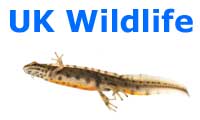
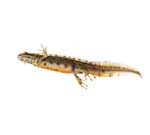
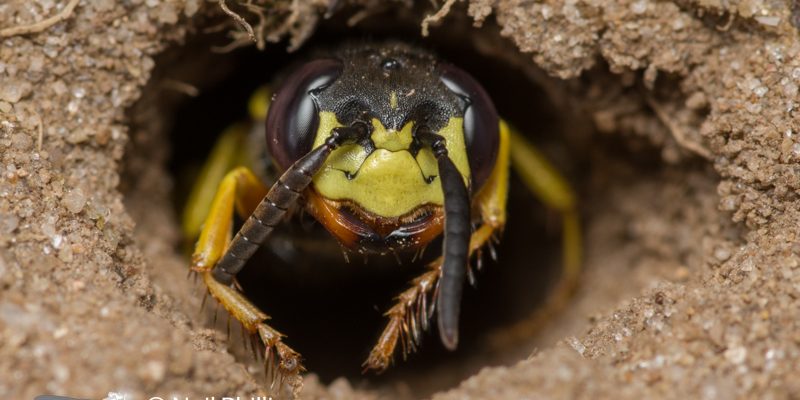
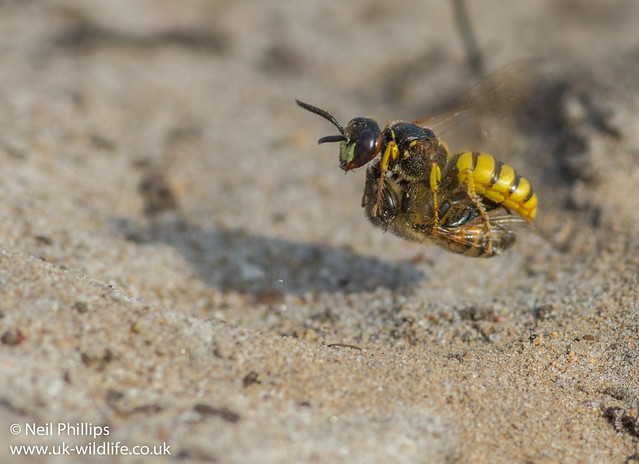
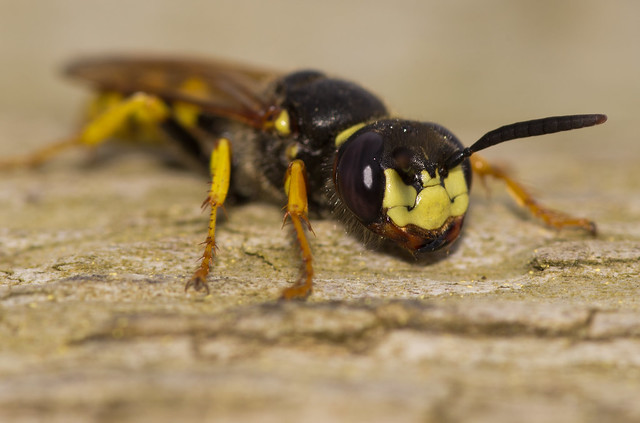






1 Comment